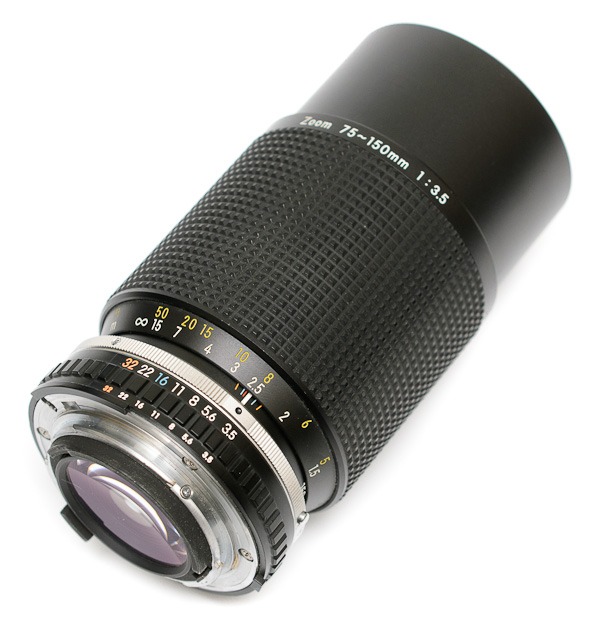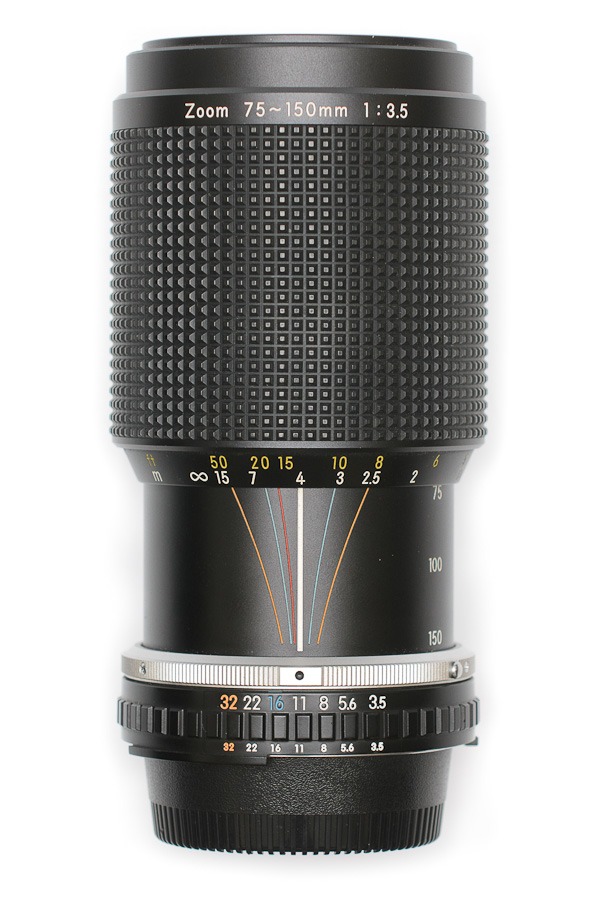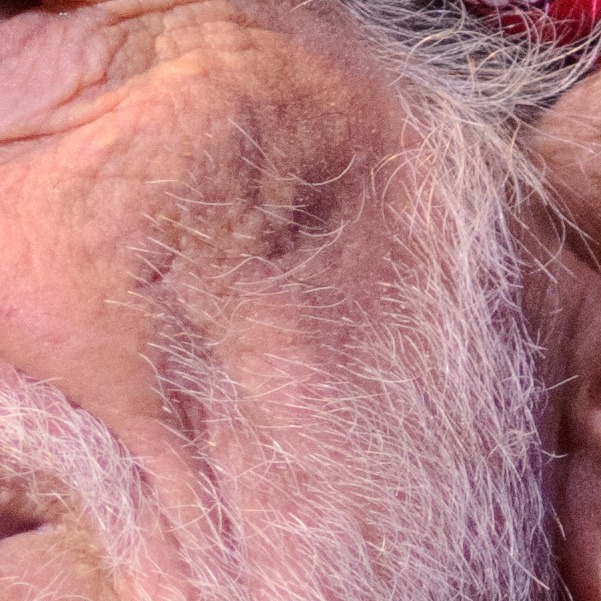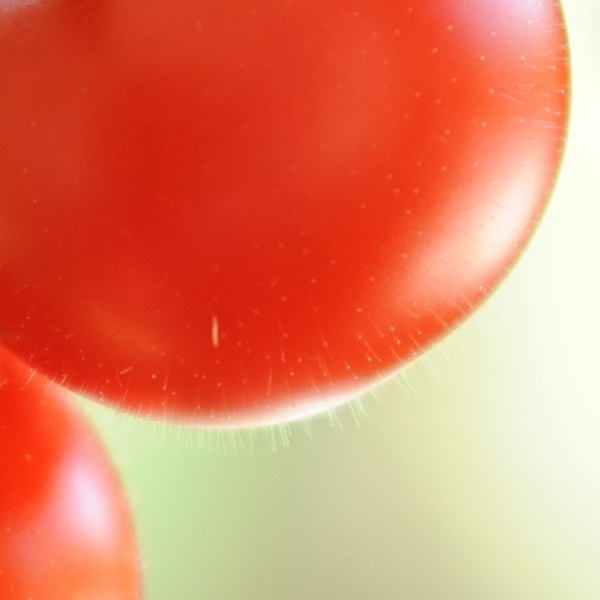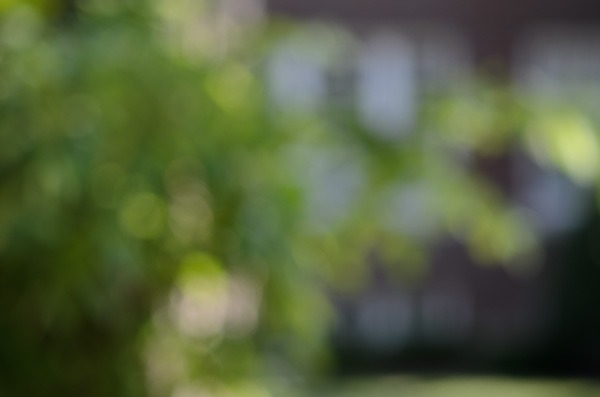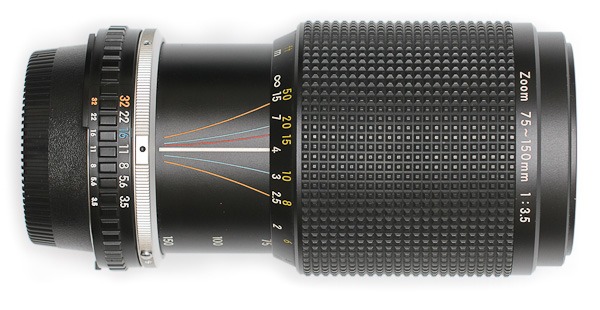
If you're looking for an economical, constant-aperture telephoto zoom, I may have the answer for you. No, not a third-party lens like the Tamron or Sigma 70-200mm f/2.8, either of which will set you back nearly a $1000.
I'm talking about a 30-year old manual focus lens that Nikon only produced between 1980 and 1983 – the Nikon 75-150mm f/3.5 Series E telephoto zoom. Here's a quick review of a zoom that's big on performance and light on the wallet.
Support These Reviews
If you find this review helpful, please consider buying your next photo gear purchase from B&H or Amazon.com, or consider renting your gear from my friends at BorrowLenses.com.
To learn how you can help support www.ishootshows.com, visit the page Buy Yourself Something Nice for a list of all the affiliates that help make the content of this site free and flowing. Now with that out of the way, let’s get to the review.
Nikon Series E – A Little History
The Nikon Series E line was a consumer collection of lenses produced between in the late 1970s through the early 1980s, with the distinction that they were “Series E” lenses instead of the Nikkor brand used for all professional Nikon lenses.
While it was marketed as an economical consumer option to pair with Nikon's similarly budget-friendly Nikon EM SLR, many lenses in the series became well regarded by amateur and professional shooters alike for the excellent image quality.In fact, Nikon's own stated intent with this line was to preserve the same image quality of their Nikkors while offering a lighter, more compact, and affordable alternative through the use of streamlined production and material selection. In addition, the designs of the Series E lenses were often less complex and relied on a few number of glass elements in their formulas, further reducing size and weight.
Famed landscape photographer Galen Rowell was a fan of some of these lenses, including the 75-150mm f/3.5 which is reviewed here. Rowell's famous shot Rainbow over the Potala Palace, Lhasa was made using this humble “budget” lens. Among all the Series E lenses, the 75-150mm has stood out in particular interest to photographers, even to the point of developing a cult status in ways few manual focus zooms have achieved.
A Cult Telephoto Zoom
In some circles, the 75-150mm f/3.5 even achieved “legendary” status for its performance, to the point that the lens was even included in Nikon's own“One Thousand And One Nights” series for breakthrough and superlative lens designs.
Aside from the excellent optical quality, one unique thing about this lens is the relative fast and fix maximum aperture of f/3.5, which comes in 1/3-stop faster than the professional grade 80-200mm f/4 Nikkor. At this speed, the 75-150mm was the fastest Nikon telephoto zoom of its day, with nearly the same range of its more expensive alternatives.
With prices around $50 and $75 on the used market, the 75-150mm f/3.5 Series E may just be the perfect fit for any photographer looking for a telephoto zoom that won't break the bank.
Design
For anyone familiar with modern telephoto zooms like Canon and Nikon's 70-200mm f/2.8 zooms, the 75-150mm f/3.5 is decidedly compact. The lens is so small that it takes 52mm filters, in part thanks to the modest f/3.5 maximum aperture and 150mm maximum focal length.
The 75-150mm features a manual aperture ring with an f/3.5-f/22 range and a combination zoom/focus ring. Along the barrel are focal length markings at 75, 100, and 150mm, as well as hyperfocal and IR focusing markings.
The body of the unit, as a push-pull design, is of a single diameter. With a 52mm filter size, this zoom nearly looks like a very long version of the classic Nikon 105mm f/2.5 Nikkor.
In terms of size, here's a comparison to the Nikon 70-200mm f/2.8 VR I:
You can see how compact the old Series E lens is compared to the modern AF-S lens, even though for all intents and purposes, they're the same category of lens.
Build Quality
While the Series E line were introduced as budget lenses, the 75-150mm still feels very solid compared to what would be considered a consumer lens today. The aperture ring detents are snappy and there's no rattle whatsoever. The biggest concern with this lens is the zoom/focus ring, which we'll discuss below.
Zoom Creep
Due to the push-pull design, the Nikon 75-150mm f/3.5 Series E can be afflicted by a phenomenon called “zoom creep.” Zoom creep can occur on this style of zoom when the felt providing fiction between the zoom ring and the lens barrel wears down. When this happens, the zoom ring may “creep” when pointed up or down as gravity pulls it.
My copy has zero zoom creep, but as far as I understand, it's an issue that can and will affect all zoom lenses of this type with enough use and wear.
Solution to Zoom Creep
The standard solution to zoom creep is to apply one or more strips of gaffers tape running the length of the zoom barrel. This effectively increases the barrel diameter and gives the matted felt on the interior of the zoom ring something to grip. In this way, even a lens with severe zoom creep can be functionally improved on the cheap.
Operation
The design of this old zoom lens features a single ring for focus and zooming. While modern lenses separate this function into two different rings, a single “push-pull” ring used to be more common in the first zoom lenses, and especially consumer zoom lenses.
The biggest benefit to this operation is that you only have a single ring to work, which can make for very fast use. The downside is that zooming can affect focus, and vice versa. With my copy this isn't an issue as the zoom/focus ring isn't affected by zoom creep, but for very loose copies I can see how it might be an issue.
The natural solution to this – which I find myself doing even though there isn't much play – is to brace the push-pull ring with the index finger of your left hand while focusing it with your middle and index finger. Using your ring finger in this way locks the position of the ring and simultaneously steadies the lens.
Manual Focusing
Overall, I was surprised by just how easy to focus the 75-150mm is on the Nikon D7000, especially considering the smaller viewfinder relative to a full-frame camera. Aside from very low contrast scenes, visual and manual focus of this lens should not be an issue.
Performance
Overall, the performance of this lens is excellent. As long as it's in focus, the results are sharp – even on a demanding sensor like that of the Nikon D7000. Nikon expert Thom Hogan has said of the 75-150mm f/3.5 Series E, “This is one of Nikon's best telephoto zoom designs.”
After using this lens to shoot music legend Willie Nelson recently, I have to agree with Mr. Hogan's assessment.

Here's a 100% crop from the Nikon D7000 and 75-150mm f/3.5 shot wide open at ISO 1600 and 1/160 second:
This was made at 150mm, where the zoom is unanimously agreed to perform “worst.” Factor in the degradation of fine detail from the D7000 at high ISO, handheld slow shutter speed, and, to me, this look great. If anything, the greatest disservice to the image quality of this camera-lens combo is the demanding sensor of the Nikon D7000.
Here's another frame of the Nikon 75-150mm f/3.5 Series E, again at 150mm and wide open at f/3.5, this time at low ISO (400) on the full-frame Nikon D3:
And here are two 100% crop from the above image:
What these crops show is very good detail from the lens, especially when adjusted for stronger RAW sharpening and micro-contrast. This image was also made at minimum focusing distance, where many lenses suffer in terms of performance, but the 75-150mm holds up beautifully.
Also notable is a very, very slight “dreamy” quality to the contrast rendering starts to hint at the age of the lens, while colors are rendered very naturally and without overpowering contrast. In fact, I would consider this combination and contrast performance almost ideal for portraiture.
Chromatic Aberrations & Purple Fringing
The one negative issue that is also clearly seen is the amount of purple fringing and chromatic aberrations present in areas of high contrast. Still, considering the applications of portraiture and similar uses, this performance wide-open isn’t a huge detriment to the lens. All issues of this fringing clear up as the lens is shot at tighter apertures.
Defocusing Characteristics
Even with a modest aperture of f/3.5, the 75-150mm offers a great abilityto render shallow depth of field and avery pleasing defocusing quality.
The above is an example of the 75-150mm shot wide open at 150mm, which shows off some of the character of this lens. Super smooth circles of confusion with very soft edges, which makes for very nicely blended backgrounds for portrait work.
While the slower maximum aperture of the 75-150mm does limit shallow depth of field compared to an f/1.4 prime like the Nikon 85mm f/1.4, the extra reach does offer its own benefits in terms of compression and isolation.
Summary
If you're looking for a lens that will “get you there” at a reasonable speed and a price 1/10 that of the third-party AF options, the Nikon 75-150mm f/3.5 houses some excellent optics in a supremely compact form.
I have no reservations about using this lens for professional work. The real world sharpness is there where you want it. Furthermore, while it lacks the same modern lens coatings and exotic glass of a lens like the Nikon 70-200mm f/2.8 VR II, I think you'd be hard pressed to pick out images from one lens or another out of a random assortment.
The real deciding factor when using a lens like this isn't the image quality, but rather whether or not the process of manual focus is appropriate for the job. This is not a job for very active subjects who will be constantly moving, which is an instance where autofocus is supremely useful. However, for more slowly moving subjects or shooting where one has the luxury of time, the Nikon 75-150mm f/3.5 is a great option.
Moreover, aside from the obvious cost benefits, the 75-150mm is also a fantastic option for travel photography and active photography, when one doesn't want to be weighed down with heavy glass but doesn't want to skimp out on quality, either. This is a gear ethic is one Galen Rowell knew and practiced, and why the 75-150mm f/3.5 was in his bag.
Where To Buy
If a constant aperture telephoto zoom with great optics and a price that won't break the band sounds good to you, your best bet in terms of bargains for finding the 75-150mm f/3.5 is eBay. For June 2011, the majority of auctions have gone between $65 and $85.
- Nikon 75-150mm f/3.5 Series E on eBay
Otherwise, KEH has a couple copies in stock as of the writing of this review, but you will pay a higher premium of around $100-$150 for copies in “excellent” condition without zoom creep.
Aside from that, the used section at your local camera shop may have a few copies of the lens as well. Regardless of where you buy, do check out or inquire about the zoom ring and whether or not the copy is afflicted with zoom creep. If nothing else, a clean copy with no creep probably means light use if nothing else.
Further Reading
- Lens Profile on the Series E Zoom at Photography in Malaysia
- Review of the Nikon 75-150mm f/3.5 by Thom Hogan
- Tale 42: The E 75-150mm f/3.5, a Nikon Series E lens
Buy Yourself Something Nice
Simply clicking through either B&H or Amazon.com here for your purchases helps me bring you free content like the photography tips and gear reviews regularly posted on www.ishootshows.com, and naturally it doesn't cost you a cent more.If you do grab some gear, drop me a line! I’d love to hear about what you picked up.


